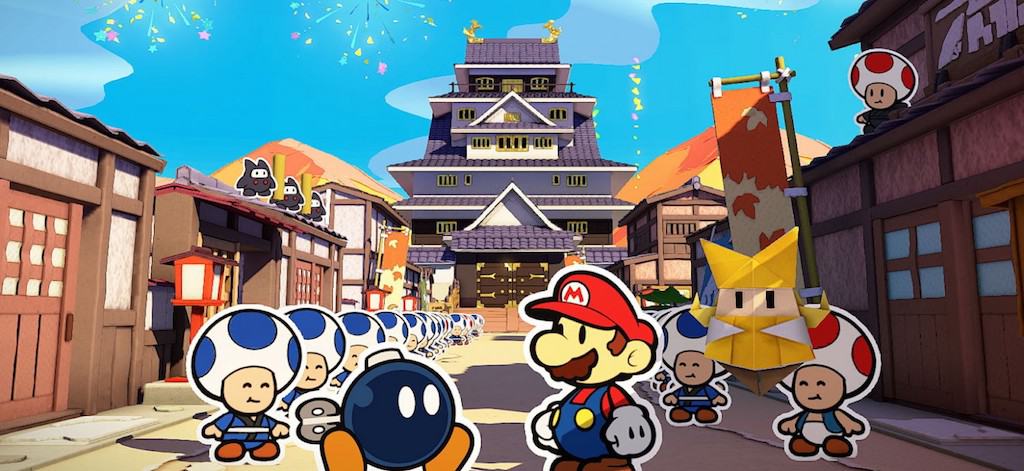Are these the greatest white wines on Earth? PETER GRIFFIN samples rieslings from the Mosel Valley and North Canterbury.
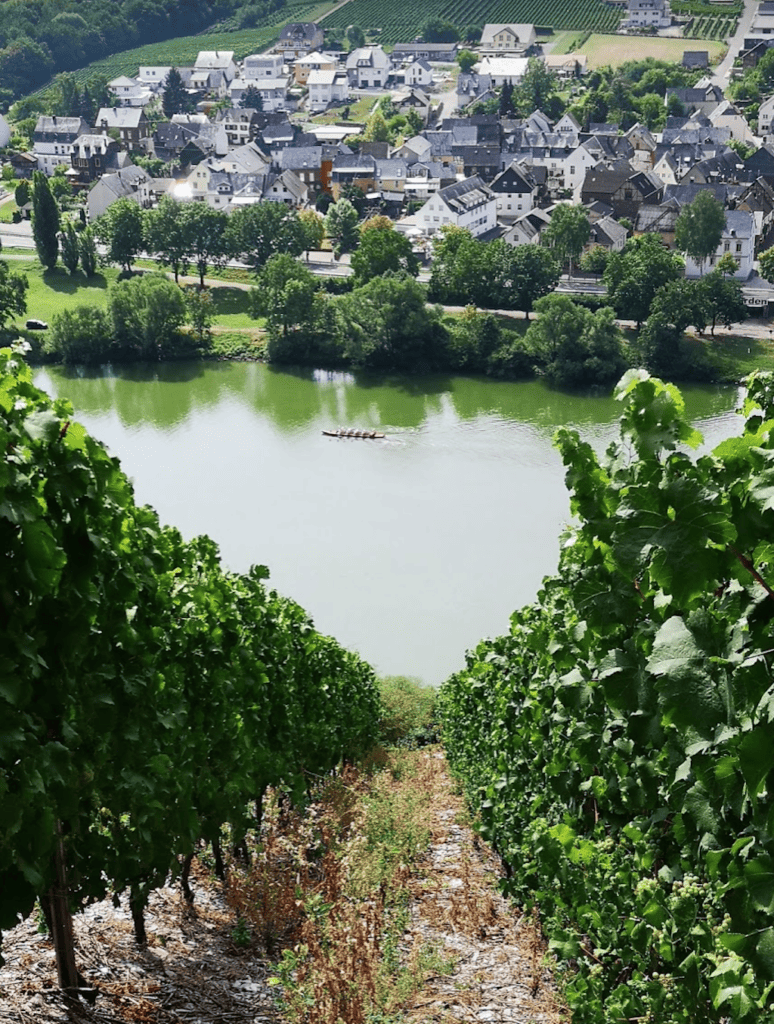
What is the greatest white wine varietal in the world? Many would say chardonnay. It is certainly the most popular, a mainstay of wine menus the world over.
If you’ve been fortunate enough to sample some high-quality examples from Burgundy, the home of chardonnay, you’ll likely have been seduced by the buttery aromas, vibrant fruit, sweet spices and mineral characters the region’s wines have to offer.
Many of our own chardonnays – those from Kumeu River and Clearview Estate for instance – are considered to be world-class. When it comes to white wine, I started in my mid-20s with crisp, tropical sauvignon blanc, the mainstay of Marlborough vineyards. For years I drank very little else. Then I progressed to chardonnay, reluctantly won over by the oaky character producers like Church Road are famous for.
I never lingered on riesling long enough to appreciate it, other than the botrytised riesling dessert wines that satisfied my sweet tooth and which our winemakers are so good at producing.
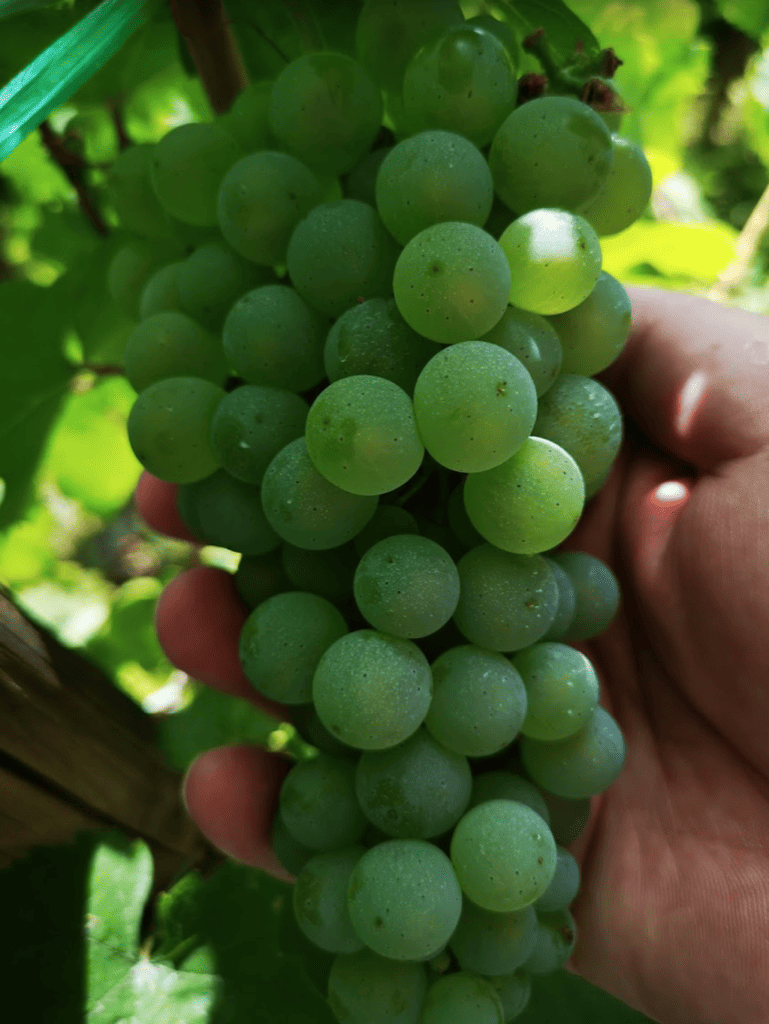
But trips to Mosel and Alsace in the last five years really opened my eyes to this grape varietal. My English friends Dominic and Vikki live in a rambling 500-year-old mansion on the banks of the Mosel river in a little town called Erden. It is in the heart of Riesling country. From my friends’ front gate, you look up at the steep vine-covered slopes that have been producing grapes since Roman times.
In Erden, a town renowned for its winemaking history, you can sit in cellars chatting with 8th or 10th generation winegrowers, who are making wine in the style their ancestors were hundreds of years ago. It is a remarkable part of Germany. I’ll write more in-depth about those trips to Mosel and to Alsace in future pieces.
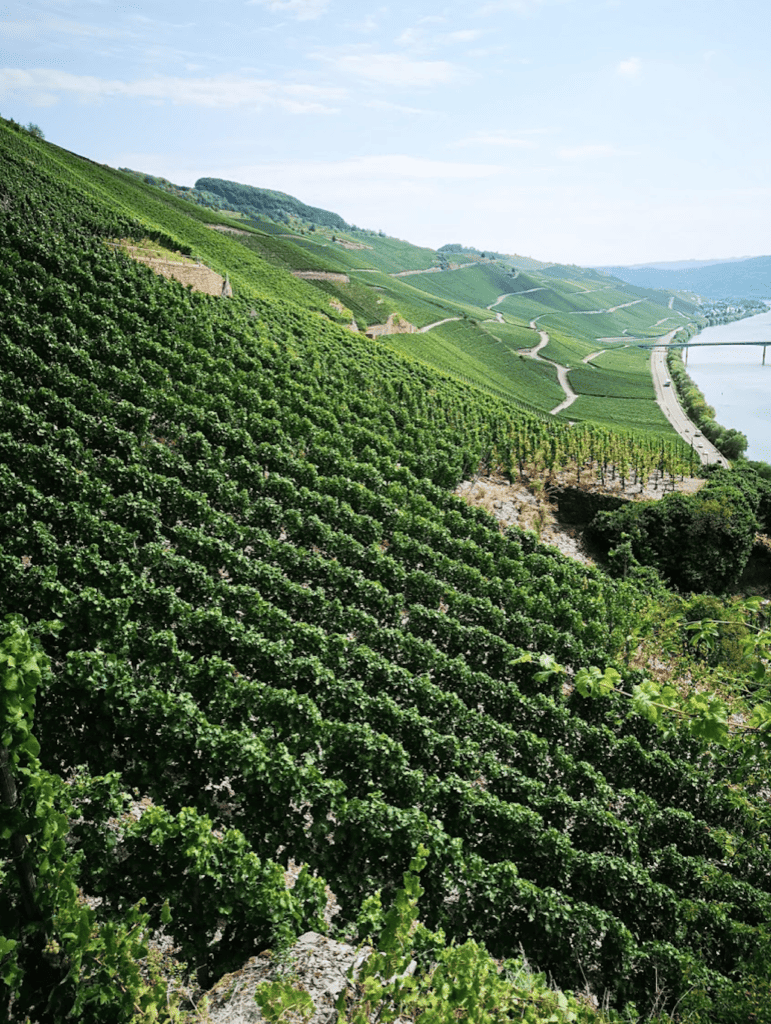
Suffice to say for the moment that my love affair with riesling blossomed as a result of those visits.
The appeal of riesling is the incredible variety you can expect, thanks to the differing sweetness, from astringent dry and off-dry examples to cloyingly sweet and rich wines at the other end of the spectrum. There is, in fact, a riesling for every occasion. A differentiating factor comes down to the residual sugar in the wine which varies from less than five grams per litre for a dry riesling to anywhere between 40 and 150 g/l for a sweet wine. But as important is the acidity, the quality of the fruit itself and the minerality that lurks in Mosel wines, in particular, inherited from the slate lies beneath the vineyards covering that valley.
Then we have our own rieslings, which are grown all over the country. I particularly love some of Marlborough’s examples, such as Forrest Estate’s The Doctor’s riesling. But some of the best-regarded riesling, at the moment anyway, originate from Omihi and the Glasnevin Gravels of the Waipara Valley and other subregions of North Canterbury.
So it was a line-up of North Canterbury producers we had the pleasure of tasting alongside Mosel rieslings at Regional Wines in Wellington a couple of weeks back.
We warmed up our palate with an off-dry 2019 Boneline, which was fresh and crisp, an easy-drinking riesling that was so appealing and good value that I picked up a couple of bottles to take home. Then we progressed our way from dry to sweet, sampling the 2015 Boneline which – while it was clearly as well-made as the 2019, lacked the same freshness and immediate appeal.
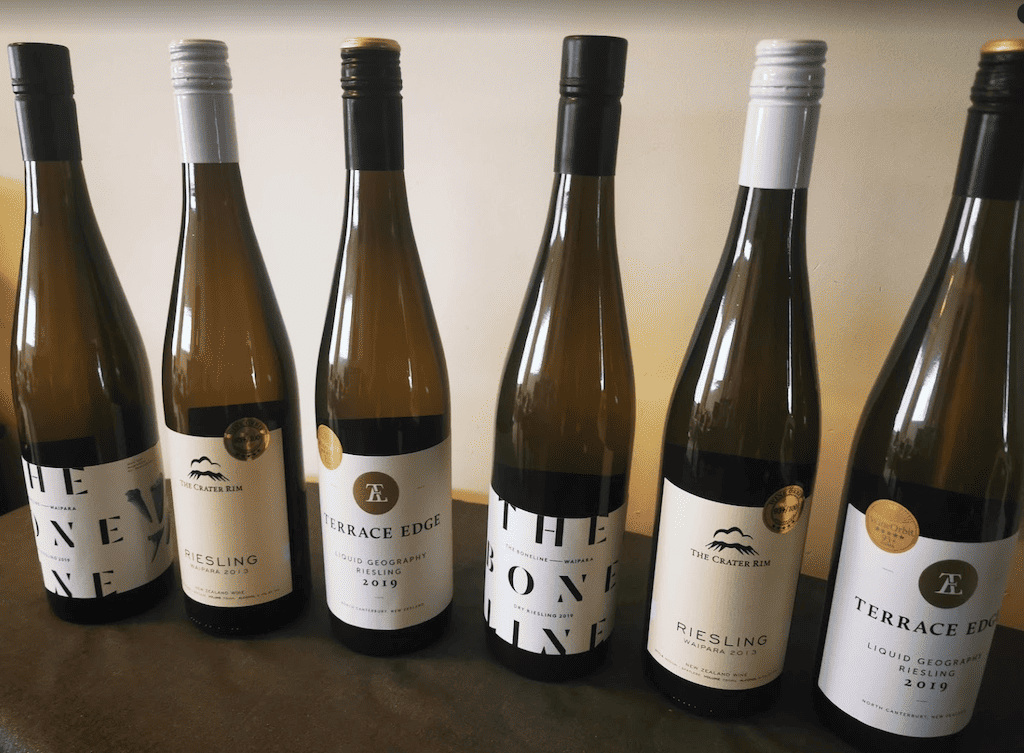
Our first German encounter was with Wittman Kirchspiel, which actually isn’t from the Mosel region, but Rheinhessen, a major wine-producing region near the Rhine. It brought me back to Germany and my early encounters with those dry rieslings, tart and acidic, lime, a hint of pineapple and with that kerosene hit on the nose.
We moved onto what I expected to be a highlight of the night, but which left me disappointed – the 2017 Pegasus Bay Bel Canto. The promised hint of spritz was there in the wine, but otherwise, it seemed flat and dull to me, the fruit characteristics undercut by an acidic, unsatisfying and short finish. Others also swirled it about their mouths in puzzlement.
As we moved onto the medium sweets, North Canterbury really put its best foot forward, with the Greystone, Terrace Edge and Crater Rim all incredibly well-balanced and bursting with apricots, lemon and lime, reasonably understated and easy to drink. Those three also represented exceptional value. Regional was offering the 2013 Crater Rim for $19.99, a complete steal.
Then to Mosel and Clemens Busch, a bit dry and subtle for my taste, with apple and honey notes. It was clearly well crafted but I expected more complexity.
On the homeward straight, we stayed in Mosel, giving the region a true opportunity to shine. The 2018 Fritz Haag was luxurious, bursting with aroma and flavour, oily on the tongue, the honeycomb and beeswax taste I associate so much with riesling and rounding things out with a lingering finish. I was in heaven drinking it.
 But then came the Schloss Leiser Niederberg Helden, which comes from a vineyard run by Thomas Haag, brother of the owner of the Brauneberger Juffer vineyard.
But then came the Schloss Leiser Niederberg Helden, which comes from a vineyard run by Thomas Haag, brother of the owner of the Brauneberger Juffer vineyard.
The Schloss Lieser is like liquid gold, a mineral, fruity nose, then a luxurious feel on the tongue; figs, apricot and honey, all the complexity you want in a sweet riesling without the weight of a dessert wine. This was an exceptional wine, the highlight of the night.
The tasting played out largely how I expected it to. The dry and off-dry German rieslings are for me slower to warm to, but given time and contemplation reveal their complex character and quality. The sweet Mosel rieslings are glorious – the Schloss Leiser is probably the second-best sweet riesling I’ve tasted. This is an expensive wine (RRP $83.99), but worth putting aside for a special occasion.
The North Canterbury rieslings displayed excellent winemaking craft and are great value for money, well-balanced and easy to drink, with their own distinctive fruit and mineral characteristics. They would all make a great accompaniment to food but are not overbearing drinking on their own.
Mosel’s quality rieslings display greater complexity and subtlety, which no doubt comes from hundreds of years of perfecting their techniques. They set the benchmark but it is heartening to see New Zealand riesling producers delivering such high-quality wines.
I departed Regional with half a case – two of the 2019 Boneline, two of the 2013 Crater Rim and two of the 2019 Terrace Edge. I’ll drink one of each young and give the others a few years to age.
Wine lingo – some pointers
 If you are new to riesling, the important thing to keep in mind is sweetness – do you love sugar like I do or favour dry, crisper acid-forward wines? If drinking German rieslings look out for the word trocken, which indicates a dry wine. Halbtrocken is off-dry, a sweeter wine is lieblich and a sweet wine is süß. Spatlese will suggest a late harvest wine where the grapes have ripened to full sweetness, what we would consider a ‘sticky’ wine.
If you are new to riesling, the important thing to keep in mind is sweetness – do you love sugar like I do or favour dry, crisper acid-forward wines? If drinking German rieslings look out for the word trocken, which indicates a dry wine. Halbtrocken is off-dry, a sweeter wine is lieblich and a sweet wine is süß. Spatlese will suggest a late harvest wine where the grapes have ripened to full sweetness, what we would consider a ‘sticky’ wine.
RS – stands for residual sugar, the sugar left unfermented in the wine and is measured by the gram per litre. The more grams per litre the sweeter the wine. ABV stands for alcohol by volume and brix is a measure of how much sugar is in the grapes, which in turn helps determine how much alcohol will be in the wine.
Yield refers to how many tonnes of grapes per hectare of grapes are harvested. Lower yield is not necessarily a bad thing as it will depend on the terroir and climatic conditions and the vines can produce some stunning wines.
REGIONAL WINES ($25 tasting)
Dry
The Boneline Dry Riesling – 2015
RS 4g/l, ABV 12%, brix 20.5
Winemaker’s notes: Yield per hectare 2.2 tonnes, soils Glasnevin Gravels. The 2015 vintage will be remembered for low crops, a frosty start and full-bodied wines from hot dry weather late in the season. Grapes hand-picked, whole bunch pressed to stainless steel and fermented with a neutral yeast strain (DV10) then on lees until bottled late summer.
My notes: High acidity, granny smith apples, lanolin, a bit sharp aftertaste
My rating: ***½
RRP: N/A
Pegasus Bay Bel Canto – 2017
RS 5.2 g/l, 14.5% ABV, brix 25, yield 4.5 tonnes/hectare
Winemaker’s notes: This wine is the product of extended hang time and a portion of noble rot. Free-run juice was fermented slowly at cool temperatures to retain fruit characters and varietal purity. Alcoholic fermentation was left to continue until residual sugar of 5 g/l was achieved. Retention of a little natural carbon dioxide gives spritz character to add liveliness and accentuate freshness.
My notes: Flinty nose, quite dry, intense, slightly acidic, short finish. Seemed to be not well-balanced.
My rating: ***½
RRP: $38.99
Weingut Wittman Kirchspiel Riesling GG – 2014
13% ABV
Winemaker’s notes: This iconic German wine is the outlier of the tasting, coming from a revered vineyard in Germany’s largest wine region, the Rheinhessen, which is home to 26,281 hectares (approximately the same size as Marlborough, New Zealand, which currently has 26,850 hectares). Residual sugar data was unavailable on this wine which is labelled trocken, which suggests it contains up to 8 grams per litre. The Wosthofen Kirchspiel vineyard is 44.2 hectares and its grapes are used by several different producers, the most respected are Wittman, Groebe, Keller, and Seehof-Ernst Fauth.
My notes: Kerosene whiff straight away, apricot and quince, drying on the tongue, a tartness to it.
My rating: ***½
RRP: $78.99
Off-dry
The Boneline Dry Riesling – 2019
RS 6.8 g/l, ABV 12%, brix 22,
Winemaker’s notes: Glasnevin gravel with varying silt loams (off dry style)
My notes: Aromatic and fresh nose. Granny smith apples, lemon.
My rating: ****
RRP: $25.99
Medium sweet
Greystone Riesling – 2018
RS 23 g/l, 13% ABV, 24 brix, 5 tonnes/hectare, 8% botrytis
Winemaker’s notes: A cool vintage with better quality fruit than the 2017 season. Grapes grown on relatively heavy clays at the base of a hillside. Certified organic wine.
My notes: An excellent, well-balanced riesling, slightly spicy notes.
My rating: ****
RRP: $24.99
Clemens Busch Marienburg Riesling GG
12% ABV
Winemaker’s notes: Clemens Busch is named after Clemens and Rita Busch, biodynamic wine producers who own the Marienburg vineyards of Punderich on the Mosel river. This vineyard is grey slate, typical of the middle Mosel, which has the highest concentration of vineyards in this region.
My notes: Medium acidity, quite dry, delicate but almost a bit watery.
My rating: ***1/2
RRP: $65.99
Terrace Edge Liquid Geography Riesling
RS 28 grams, 12.5% ABV, brix 22.5, yield 5 tonnes
Winemaker’s notes: A family-owned winery in North Canterbury, which makes two rieslings each year and the balance of varying degrees of residual sugar, due to the growing conditions each year and the balance of acidity. The wine is fermented in stainless steel at cool temperatures to preserve fruit flavours, gently handled to retain some natural spritz. This wine contains 5% botrytis and is certified organic.
My notes: Wonderful floral nose, great basket of fruit coming through on the palette as well as honey and lime, medium sweetness, rich and complex, yet fresh and vibrant.
My rating: ****½
RRP: $21.99
Crater Rim Riesling 2013
RS 33.1 g/l, 9% ABV, brix 21, yield 8 – 10 tonnes/hectare
Winemaker’s notes: Grapes grown on Glasnevin Gravels soils, vine age about six years old at the time of harvest. Winemaker Haydon Good worked for Clemens Busch in the Mosel, from which he says one of his take-home pieces of information for making riesling was to make the picking decision on acidity and then balance the wine with residual sugar, depending on the season and the acidity.
My notes: Decent hit of kerosene on the nose, buttery, mellow, fresh zingy fruit, well-balanced, delicious.
My rating: ****½
RRP: $21.99
Sweet
Fritz Haag Brauneberg Juffer Sonnunuhr Spatlese – 2018
7.5% ABV
Winemaker’s notes: Grown on south to south-west slopes at elevations of 110 metres to 185 metres with steepness up to 85%. Soils grey and blue devonia slate, high percentage of slate and rocks. Age of vines 30 to 70 years old. Wilhem Haag was born in 1937 and focussed on quality from the start, becoming a member of the VDP. He handed running of the winery over to his son, Oliver Haag in 2005.
My notes: Buttery and honey notes straight away, with an oily varnish after taste, delicate yet powerful apricot and pineapple notes. Fantastic.
My rating: ****1/2
RRP: $57.99
Schloss Leiser Neiderberg Helden Auslese – 2016
RS 95 g/l, 7% ABV
Winemaker’s notes: Grown on south to south-west slopes with elevations of 110 to 190 metres and steepness of up to 80%. Soils are blue Devonian slate and a plateau on the top of the hill of Neiderberg provides good water supply.
My notes: Like golden syrup, but light and fruity, spicy and complex, wonderful aromas and mouthfeel, long, lingering spicy and sweet finish. Delicious.
My rating: *****
RRP: $83.99
Visit www.wine-searcher.com for further details on all of the wines mentioned above.








